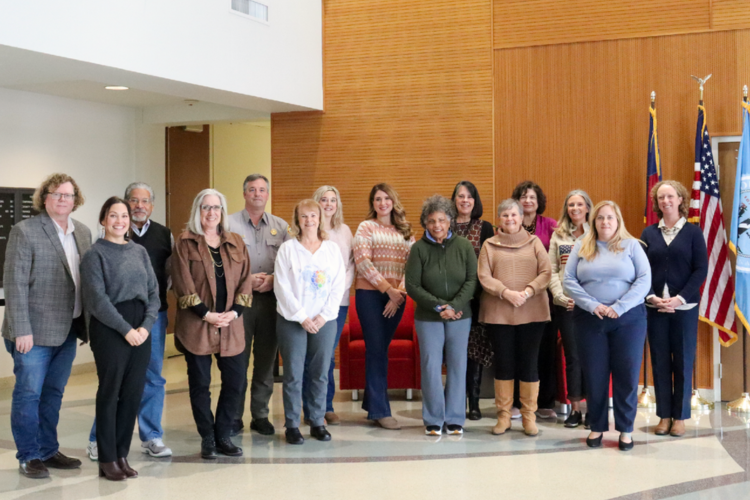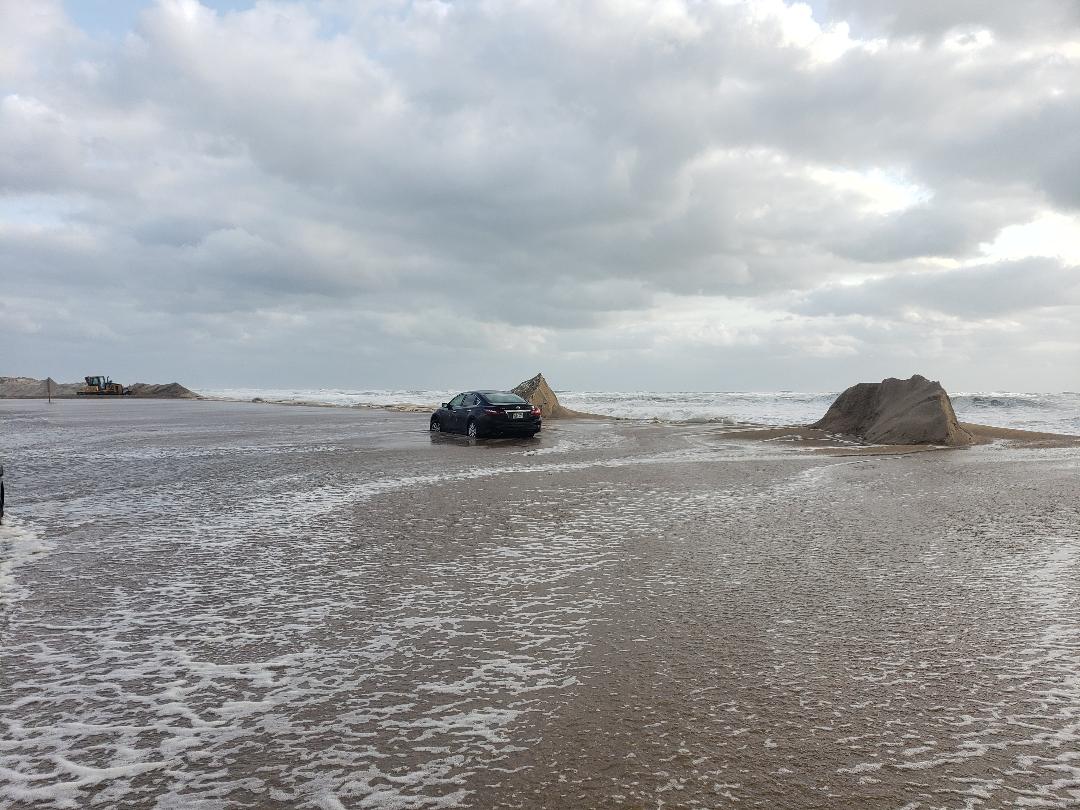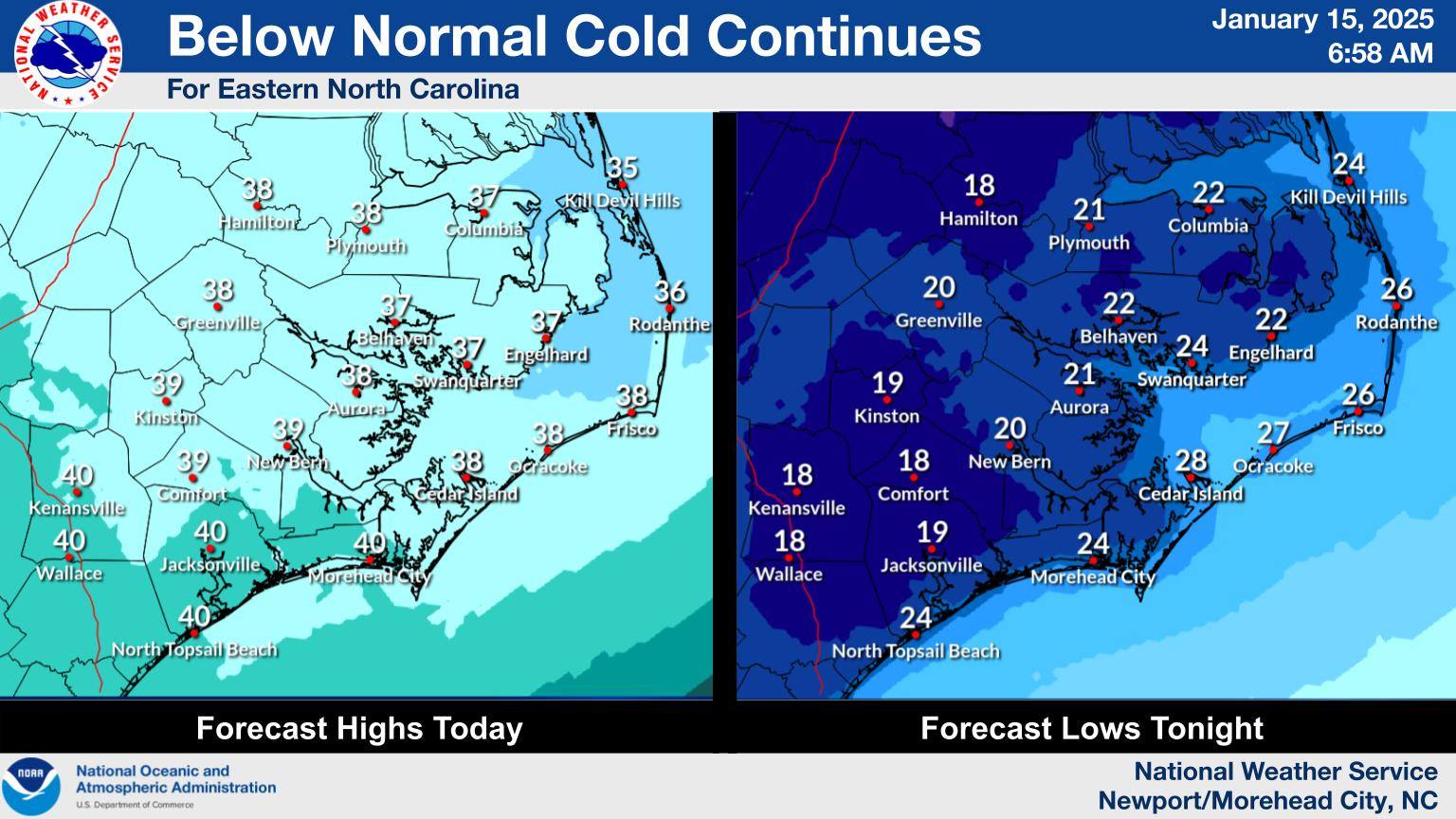Surviving Matthew: One Family’s Story
It’s early Wednesday afternoon, and Laurie Parker is in the middle of her yard that is full of debris and flooded belongings at her home just off Kohler Drive in Hatteras village.
It’s her third day of cleaning, but there’s still so much more work to be done, and it’s hard to figure out where to start next.
“I have been working for two hours this morning, and I look around and it seems like nothing has changed,” she says, surveying the stacks of boxes, toys, and other equipment that is in need of cleaning or attention.
Laurie and her family, which includes her husband, Charles, and their three daughters are but one of the dozens of families in Hatteras village who are still inundated with work after Hurricane Matthew caused record soundside flooding in many locations throughout Hatteras village.
Like many residents, she says the storm surge from Matthew was the highest she has seen in her lifetime, and in its wake is a large mess and a massive recovery effort that’s only in the early stages of being completed.
Laurie has been a Hatteras islander for nearly her entire life, having moved with her parents to the area when she was just 6 months old. She’s a fifth grade teacher at the Cape Hatteras School, while her husband works on a tug boat. She has lived at her current home in Hatteras village for 20 years.
“This house was built in 1928,” she says. “And as far as I know, the only other time that water came inside was during Hurricane Emily in 1993.
“During Emily, there was maybe an inch of water in the house,” she says. “During this storm, we had 10 inches of water inside.”
Laurie’s ordeal with Matthew, like all Hatteras village residents, began early on Sunday morning, Oct. 9.
Her husband was out of the area — his jobs takes him out to sea for two weeks at a time — and she was home with her three daughters, 12-year-old Rennie, 9-year-old Cate, and 5-year-old Josie.
“I woke up a lot that night,” she says, “but at first it didn’t sound like the wind was blowing that hard. Then I woke up at 4:30 a.m., and everything changed.”
At 4:30 a.m., the wind had picked up, and she noticed that the waters had started to rise just outside her door.
“When I woke up, it was about 6 inches from coming inside the house,” she says. “I thought, ‘OK, I’m going to let the girls sleep until it’s 3 inches away, and then we’ll get moving…’”
It didn’t take long for the water to reach that 3-inch benchmark, and Laurie and her daughters started to scramble around the house in pajamas moving everything they could. Toys, books, totes, bottom dresser drawers, and everything that was near ground-level and which could be lifted was moved, as the water rapidly made its way up.
By 5:00 a.m., the water was inside the house, and it kept rising until it was about 10 inches high in the first floor. Laurie and her daughters went upstairs to their attic bedroom where they rode out the storm.
“The storm was still going strong, and there was nowhere to be downstairs, and nowhere we needed to go,” she says.
“Except for the bathroom,” corrects her daughter Josie.
“Well, yes, we did go to the bathroom. But otherwise, we stayed up there playing games and puzzles.”
“My daughter [12-year-old Rennie] is reading ‘The Diary of Anne Frank’ at school, so she called it our ‘secret annex.’”
Laurie and her daughters were calm throughout the storm, simply because there was nothing they could do. But while they stayed in the attic, the stormwater – which rushed in and out in roughly two hours’ time – had caused massive damage.
Sewage started coming out of the bathtubs, and everything from the dryer to the pots and pans on the kitchen counters was filling with saltwater. Minnows swam around in the kitchen, and strings of seaweed inundated every surface.
Her husband Charles was out on a trip that had to make a detour from the Chesapeake area to Baltimore, also due to Matthew, but they stayed in touch throughout the storm.
At around 5 p.m., they packed up a Coleman camper stove, broke out their kayaks, and headed over to Laurie’s father’s house with some soup she had made the night before to have dinner in her dad’s dry living area.
“They got about 20 inches of water in their garage, but their living space was nice and dry,” says Laurie. “And we had so much stuff piled up, that there was nowhere to put anything, and nowhere to sit down and eat.”
At around 7 or 8 p.m., the power came back on, and Laurie waded back to the house to figure out what to do next.
On Monday, water was still high in the yard and the neighboring street, but it was mostly gone from the Parker’s home.
However, what was left behind was simply a total mess.
All of the appliances – including the refrigerator, dishwasher, washer and dryer – had been ruined, as well as a host of furnishings, mattresses, walls, carpeting, and basically anything that was standing on the floor.
While Laurie was calm during the storm – simply because there was nothing that could be done at the time – in the immediate aftermath, a feeling of being overwhelmed began to creep in.
The lone bright side was that it didn’t take very long for help to arrive.
Chris Wright, the officer in charge of the Coast Guard station at Hatteras and a family friend, stopped by with his family and crew and began helping Laura move stuff upstairs.
A trio of locals also walked up to her house and asked if she needed help ripping the soaked carpets off the floors.
“They just came in and started pulling up the carpets,” says Laurie. “It was wonderful.”
Then Chris Wright left to get the kids something to eat at the Hatteras village fire station, and returned not long after with a few visitors from Colorado who happened to be on the island, and who were looking for a way to help the local residents.
“It was amazing – they just wanted to help out, and so they started to help us bleach [the home] with mops.”
Her fellow teachers from the Cape Hatteras Elementary School also came by to lend a hand. Hatteras Recycle swung by to drop off recycling bins, and Mary Ellon Balance – the community organizer of the recovery response – called her on Monday night to see what she needed help with.
Over the past several days, Laurie estimates that more than 20 people had come by to help out with the initial cleaning of the house, which included removing flooded items, carpets, and trying to salvage whatever they could.
“Everyone has been absolutely wonderful. It makes you so thankful to live in a community where people are willing to come together, and give their time and their help,” she says.
And while the Parkers are off to a good start in putting things back together – or at least, tearing things out so they can eventually be put back together – like many islanders, the sheer amount of work that needs to be done is overwhelming.
“I’m so grateful for everyone who has come, but sometimes I’m not even sure what to do,” says Laurie. “People are helping so much, and they’re asking how they can help more… but sometimes I look around and wonder ‘Wow, where do you start?’”
Eventually, the house will have to be gutted. The walls are going to have to come out, the floors are going to have to be redone, and a major renovation will be underway.
In the meantime, Laurie and her family will be moving to a house her father-in-law has in the village to wait until her house can be brought back to life.
“Right now, we’re packing boxes and trying to figure out where to store all of our stuff, because it’s not all going to fit,” she says.
And while the future for right now is still messy and a bit uncertain, one thing that is certain is that despite this drastic setback, the Parkers aren’t going anywhere – at least, not off of Hatteras Island.
“I’d rather be in Hatteras than anywhere else,” says Laurie. “We’re a resilient community and we get through the hard times. And I wouldn’t want to live anywhere else.”













